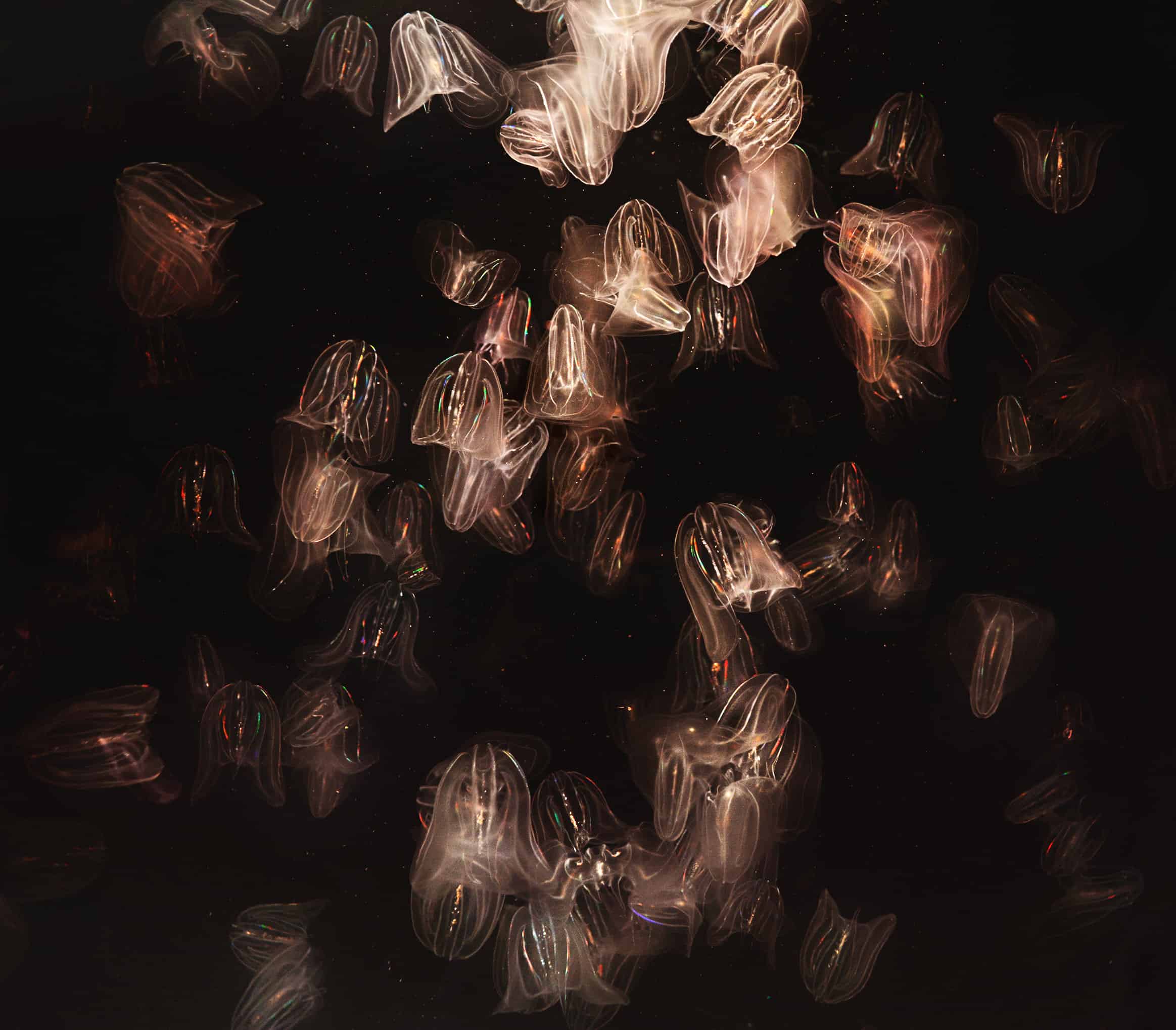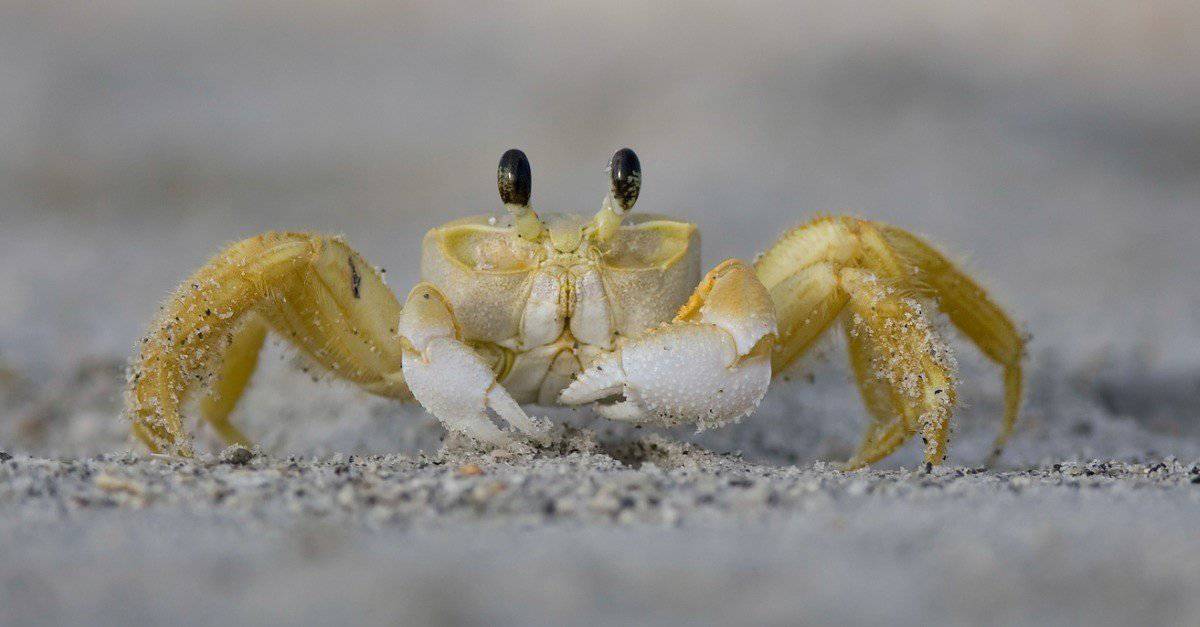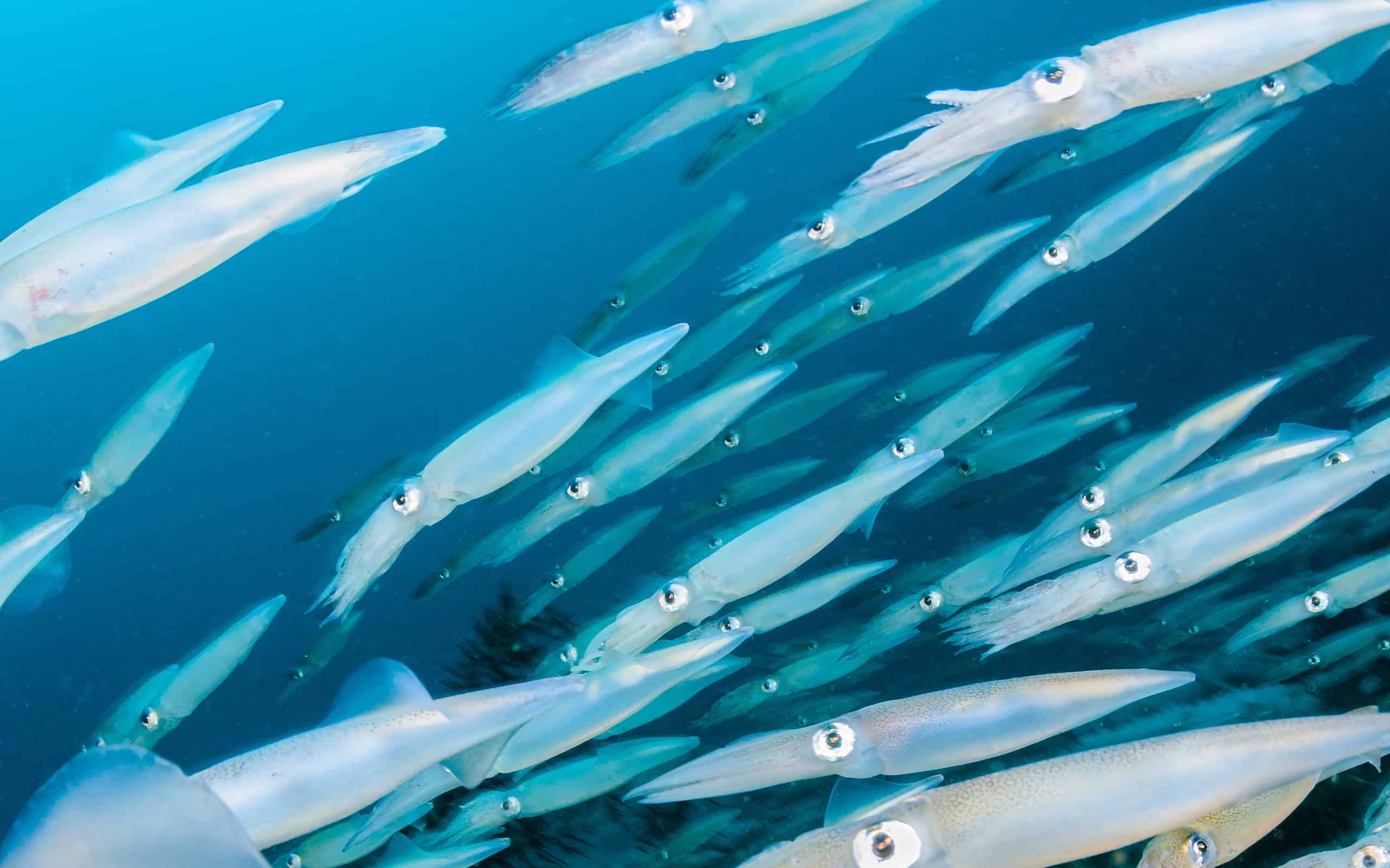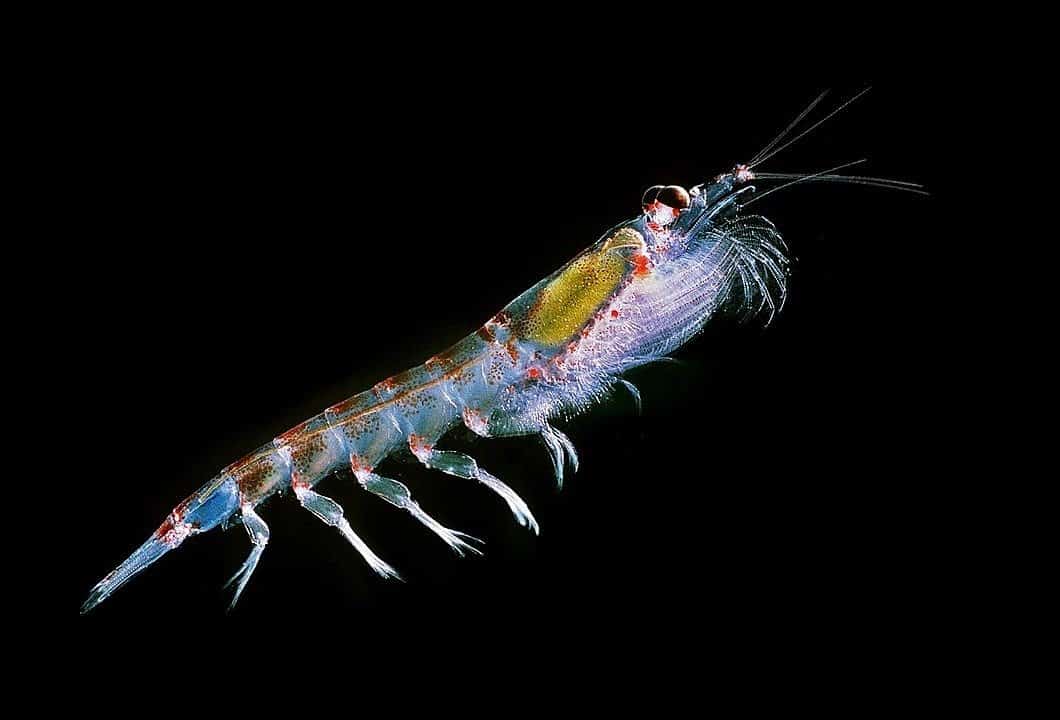Plankton are tiny or microscopic organisms in marine environments that drift with the currents. Phytoplankton are tiny photosynthetic organisms, such as green algae, while zooplankton are tiny animals, such as krill.
These minuscule marine organisms contribute to the survival of all life on Earth. Phytoplankton contribute roughly half of the photosynthesis on the planet, making them significant producers of the world’s oxygen. Providing nutrients to the largest animal on the planet and some of the smallest, plankton are a critical aspect of the oceanic food web.
In this guide, we’ll discover seven animals that eat plankton.
Read on to learn more!
1. Animals That Eat Plankton: Comb Jellies (Ctenophora)

Comb jellies feed on both phytoplankton and zooplankton throughout their life cycle.
©ELEPHOTOS/Shutterstock.com
Comb jellies, also known as ctenophores from the phylum Ctenophora, primarily consume phytoplankton as larvae. Once the comb jellies mature, they switch to feeding on zooplankton. Large populations of mature comb jellies can decimate local populations of planktonic crustaceans called copepods.
Comb jellies inhabit all of the world’s oceans and are especially abundant along the eastern coasts of the Americas. The majority of species inhabit temperate, tropical, and subtropical surface waters.
2. Sand Crabs (Emerita spp.)

Sand crabs use specialized feather-like antennae to filter feed microscopic plankton along the shoreline.
©iStock.com/Canon_Bob
Small crab-like decapod crustaceans that burrow beneath the sand along ocean shorelines, sand crabs of the Emerita genus use their specialized antennae to filter feed. These scavengers primarily feed on small organic particles and plankton found in the swash zone along the seashore.
When a wave recedes and flows over the burrowed sand crab, it unfurls a pair of feathery antennae to quickly sort through the water and sand to filter feed on microscopic algae and zooplankton.
3. Animals That Eat Plankton: Blue Whale (Balaenoptera musculus)

The largest known animal to have ever existed on Earth, the
blue whale
, feeds on plankton.
©Andrew Sutton/Shutterstock.com
The blue whale (Balaenoptera musculus) is the largest known animal to have existed on our planet, and it feeds on the smallest of marine organisms. As a baleen whale, the blue whale uses its keratinous baleen plates to filter seawater for their favorite prey- krill.
The blue whales of the North Atlantic and North Pacific can grow up to about 90 feet in length and weigh over 100,000 pounds. Meanwhile, their relatives in the Antarctic can reach up to 110 feet in length and weigh over a staggering 330,000 pounds. These oceanic goliaths can consume up to 16 tons of krill per day.
4. Whale Shark (Rhincodon typus)

While whale sharks sometimes feed on small squids and marine vertebrates, the bulk of their diet consists of zooplankton.
©Sean Steininger/Shutterstock.com
The world’s largest extant shark species, the whale shark (Rhincodon typus), is a filter feeder that dines primarily on planktonic jellyfish, crab larvae, copepods, fish eggs, and krill.
Unlike the blue whale, the whale shark does not have baleen to filter their tiny food source from the ocean water. Instead, the planktonic organisms are strained through gill rakers. These rakers function as a fine mesh, projecting like tiny bristly combs from the gill arch.
5. California Market Squid (Doryteuthis opalescens)

Especially when young, the diet of the California market squid includes larger zooplankton such as krill.
©Michael Zeigler/iStock via Getty Images
The California market squid (Doryteuthis opalescens) is an opportunistic, sometimes cannibalistic, feeder primarily consuming zooplankton, small fish, marine crustaceans, and juvenile squids. Their primary zooplankton target is krill. Juvenile market squid consume the most krill, with mature individuals focusing on larger prey.
6. Animals That Eat Plankton: Krill (Euphausiacea)

Krill are large planktonic crustaceans that filter feed on phytoplankton.
©Krill666.jpg: Uwe Kils / Creative Commons - License
Krill are one of the largest categories of free-swimming planktonic crustaceans. They belong to the Euphausiacea order and filter feed on phytoplankton. The Antarctic kill (Euphausia superba) is one of the most ecologically important species of krill.
Scientists estimate there are about 700 trillion adult Antarctic krill inhabiting the Antarctic Ocean. Their huge population in the Antarctic Ocean provides the backbone of the food web for various Antarctic marine life, such as whales, seals, squid, and penguins.
7. Least Auklet (Aethia pusilla)

The least auklet specializes in a diet of copepod zooplankton. Adults and chicks rely on these tiny marine crustaceans for survival.
©Public Domain - License
The smallest species of the auk seabirds, the least auklet (Aethia pusilla) specializes in a diet of zooplankton. These birds are equipped with a special pouch under their tongue that allows them to store hundreds of zooplankton, primarily copepods, at a time.
Adults both feed on these tiny marine organisms and bring them back to their nests of hungry chicks. The least auklet predominantly feeds on calanoid copepods, which are an order of arthropod zooplankton.
The photo featured at the top of this post is © Martin Voeller/iStock via Getty Images
Thank you for reading! Have some feedback for us? Contact the AZ Animals editorial team.






